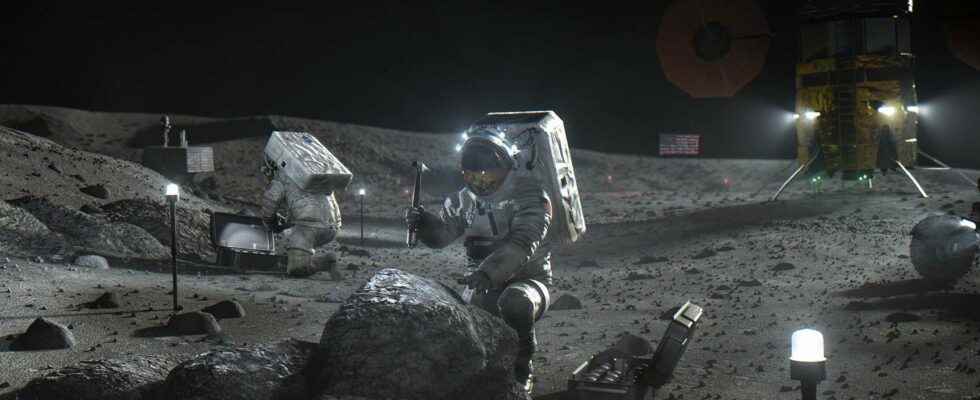A few days ago, NASA selected on the Moon several potential landing sites for the Artemis III mission, the first of the program which is to bring the United States back to the Moon. NASA plans it in 2025 with a crew of two astronauts including a woman and a person of color. Thirteen places of approximately 15 square kilometers have been identified within which one or more landing sites, with a radius of more or less 100 meters, are possible. These places were obviously not chosen at random. They offer ideal “technical” conditions for landing, living and working there and are of scientific interest.
Contrary to Apollo mission landing siteslocated atequator and on the visible side from Earth, all of these future Artemis mission sites are located at the lunar South Pole. The choice of several dozen potential sites, rather than a few, is explained by the desire of NASA to give itself a certain flexibility and flexibility of launch throughout the year.
This selection was made on the database probe Lunar Reconnaissance Orbiterincluding altimetric and topographic maps which made it possible to locate peaks of light eternal, floors craters permanently in the shadow of the Sun and the terrain best suited for a landing. They all possess lighting conditions for a continuous period of at least 6.5 days, i.e. the duration planned for the Artemis III mission. These sunshine conditions are essential because they provide a source of energy and minimize temperature variations.
Landing sites that meet both technical and scientific criteria
The choice of the landing site is always a headache for the scientific team of each mission, the place of which must not only be suitable for the researchers, but above all for the engineers and pilots of the lunar lander which is going to land. Contrary to popular belief, it is not always possible to land where the scientific interest is the greatest because it is necessary to take into account many parameters. For the most part, they are tied to the combined abilities of the Space Launch System (SLS), from the spacecraft Orion and Starship human landing system of SpaceX which will define the mission profile and the landing trajectory of the Starship.
In addition, the surface on which Artemis III will land must also meet certain conditions such as land as flat as possible and lightly cluttered with large rocks as well as an altitude that facilitates communications with Earth. .
They are all located in the immediate vicinity of cavities or craters permanently in the shade of the Sun
These landing sites were also chosen based on scientific recommendations. Unsurprisingly, they are all located in the immediate vicinity of cavities or craters permanently in the shade of the Sun whose bottoms and floors could shelter water ice. ” Several of the sites offered in these regions are located in some of the oldest parts of the Moon and, together with the permanently shaded regions, provide the opportunity to learn more about the Moon’s history through lunar materials that do not have not yet been studied said Sarah Noble, chief scientist of the Artemis mission for NASA’s Planetary Science Division.
This video features a data visualization showing the locations of the 13 locations highlighting the topography and exploration potential of these areas. © NASA Goddard Space Flight Center
Finally, the team of engineers and scientists in charge of selecting these sites also took into account the scientific objectives specific to Artemis III, in particular that of landing sufficiently close to a region in the shadow of the Sun at all times to allow the crew to reach it easily, while limiting its degradation, or even its pollution, that the maneuver could cause landing. This should allow the crew to collect samples and conduct scientific analyzes in an area without it being damaged by the Starshipwhich will provide important information such as the depth, distribution and composition of water ice that has been confirmed at the South Pole of the Moon for example.
Interested in what you just read?
